The Valley of the Butterflies (Petaloudes) is another one of the landmarks of the island: the "Zitia" tree, which is found in a few parts of the Mediterranean, hosts millions of butterflies that peacefully hang in the shadowy wet paths it creates with the brook, which occasionally is transformed to lakes and small waterfalls.
During August, thousands of butterflies of the genus Panaxia (species Quadripunctaria Poda) swarm into the butterfly valley in order to reproduce. During the rainy period, the butterflies, still in the caterpillar stage, remain in the Mediterranean thicket (arbutus, myrtle and rush) feeding on the foliage.
As the end of the wet season approaches, towards the end of May, the final stage is concluded and the butterfly in all her perfection makes her appearance in the form recognizable to us all. They move constantly towards areas with high humidity, always following the "water ways", and as the dry period progresses, they finally arrive at the valley.
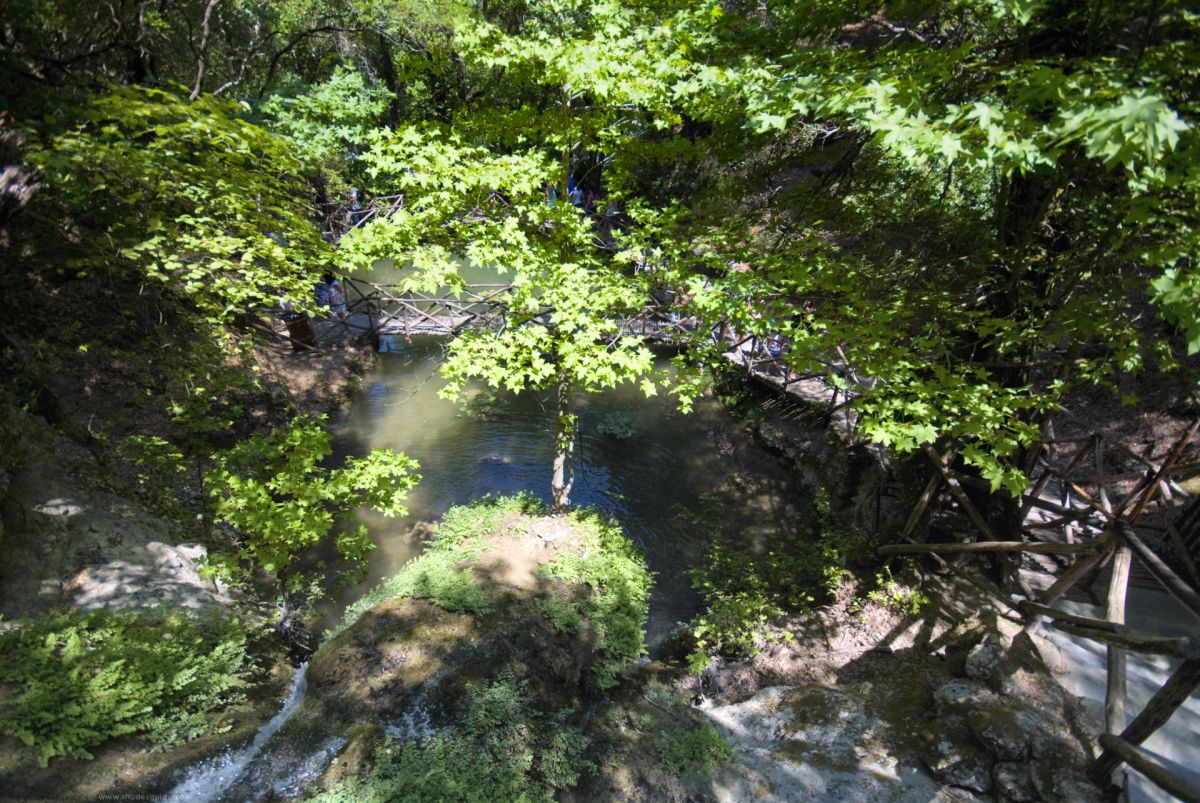
The butterflies like it quiet!
Unfortunately, over the last few years the population of the Panaxia butterfly has been constantly in decline, due to several factors, one of the most important being the disturbance by visitors. The butterfly has an atrophic peptic system, meaning has no stomach. From May until the mating period (for the males), and until the egg lying period (for the females) they do not eat. They survive from the energy stored from their previous lives as caterpillars.
The disturbance of visitors is forcing the butterflies to fly all day, consuming valuable energy. Visitors should not be denied the enjoyment of viewing the butterflies at rest, but it is prohibited to disturb them in any way (hand clapping, whistling etc).
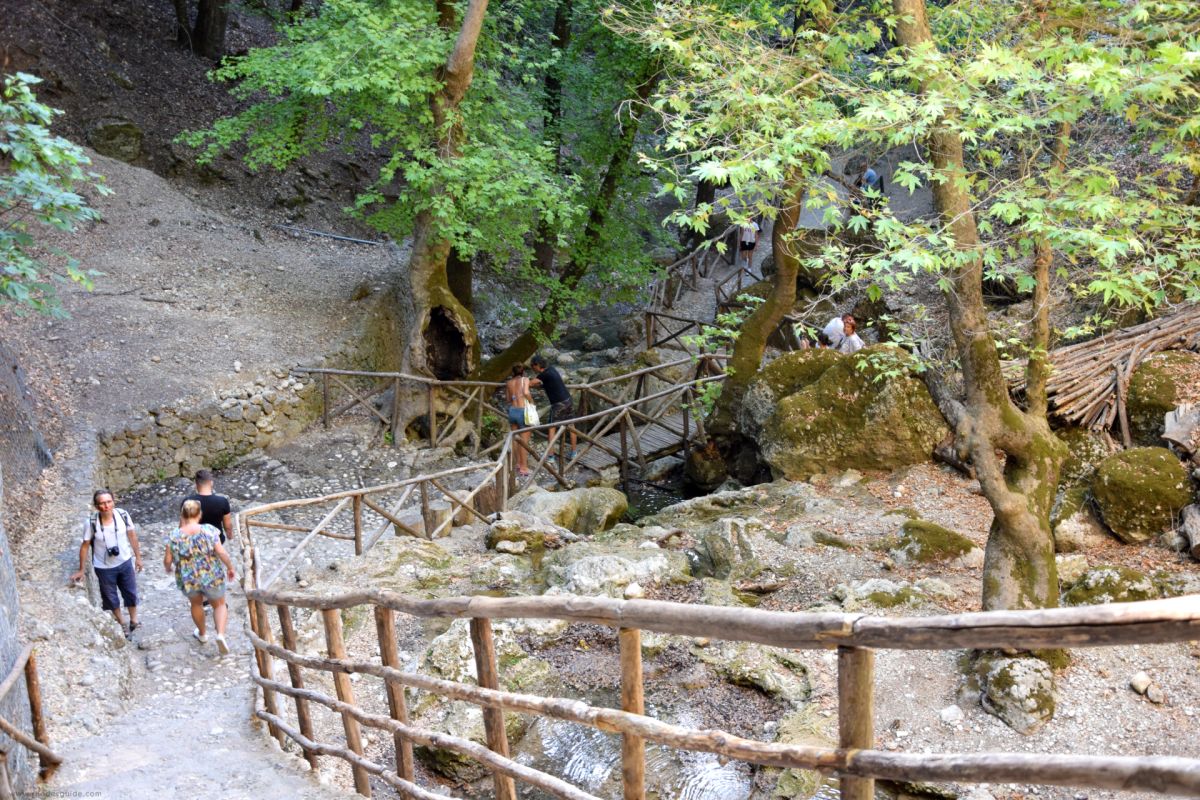
Morphology and Developmental Stages of the Butterfly
There are four stages of development for the Butterfly: egg, pre-nymph (caterpillar or larva), nymph (pupa or chrysalis) and final and perfect stage. The life cycle is one year.
The butterfly Egg
Towards the end of September, the female butterfly lays more than one hundred eggs, white in colour, placed side by side like a mattress, or individually. The eggs are tough, resilient and slippery which offers them a great deal of protection against predators. As the cycle is only one year the butterfly dies a few days after the egg laying, a fact which places great biological importance on the egg for the existence and perpetuity of the species.
The butterfly Pre-nymph
The caterpillar has a worm-like appearance and emerges approximately one month after the eggs have been laid, around the end of October, Initially it is only one millimetre in length but it continuously grows. Its skin colour is yellow and white in the beginning, gradually darkening later on.
The increase in body size causes the shedding of the old skin and the appearance of a new one. This occurs six times. The pre-nymph stage lasts through the winter and spring, it's primal function being food consumption. Large amounts of plant material are consumed in order to made into larva tissue.
The butterfly as Nymph
This is the immobility stage, where the insect remains mummified within the cocoon, surrounded by a shroud. This takes place under stones, leaves or even a few centimetres under ground, usually beginning in the last two weeks of May. The cocoon is almost transparent with a brown tinge.
This stage lasts for a month. During this time, all the necessary re-organization of tissue takes place and as result the adult appears with the simultaneous shedding of the cocoon in the first few days of June. In the resting position, the Panaxia as an isosceles triangle with a head and wings which are held tightly against the body.
The wings have a brownish black colour with irregular yellowish white stripes, colours which were developed to blend into the surrounding tree trunks and rocks making it difficult for a predator to distinguish them. During flight, they reveal two bright red rear wings decorated with four black spots on each. Our "tree trunk" now appears bulky, hairy and bright pink! The antennae are long and pointed.
As in any large population of a species, for example humans, we don't all have exactly the same physical characteristics. The same applies to butterflies. The basic colours already described can vary from grey-brown to black for front wings and from yellowish red to deep red for the rear ones.
Panaxia feeds only during the pre-nymph stage. Experiments have shown that the adult can survive throughout the entire summer on water alone. It uses it's fat deposits to cover its energy needs.
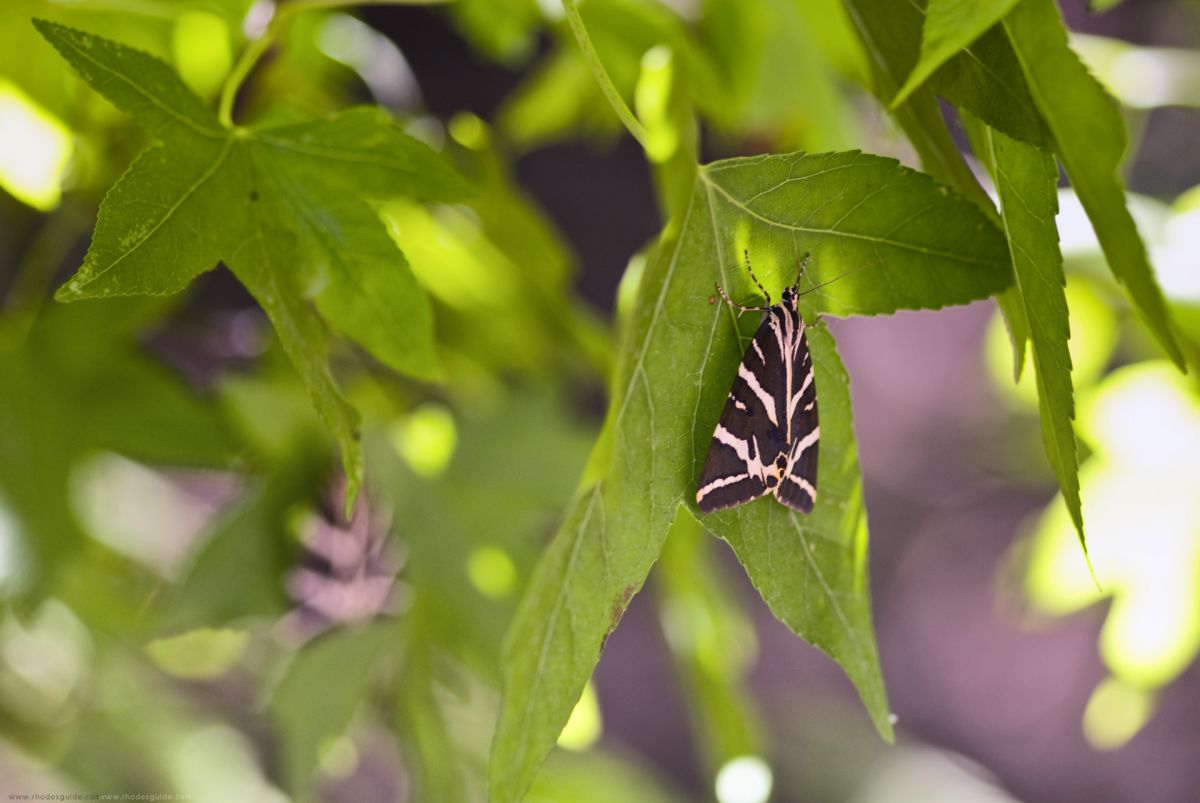
The main natural enemies of Panaxia are frogs, lizards, crabs and bats. The butterflies react strongly to ultrasounds, indicating that they sense the ultra sounds emitted by bats. Panaxias' reaction to whistling and hand-clapping is immediate. This reaction consists of flying away from the danger area or evasive flight manoeuvres such as flying with wings only half open or irregularly flapping the wings.
When the cause for panic is over, Panaxia gathers its wings, calms down and settles once again into a sleeping position. It is important to understand that this behavior forces the butterfly to use energy it can not replace, so it is prohibited to disturb the butterflies in such ways.
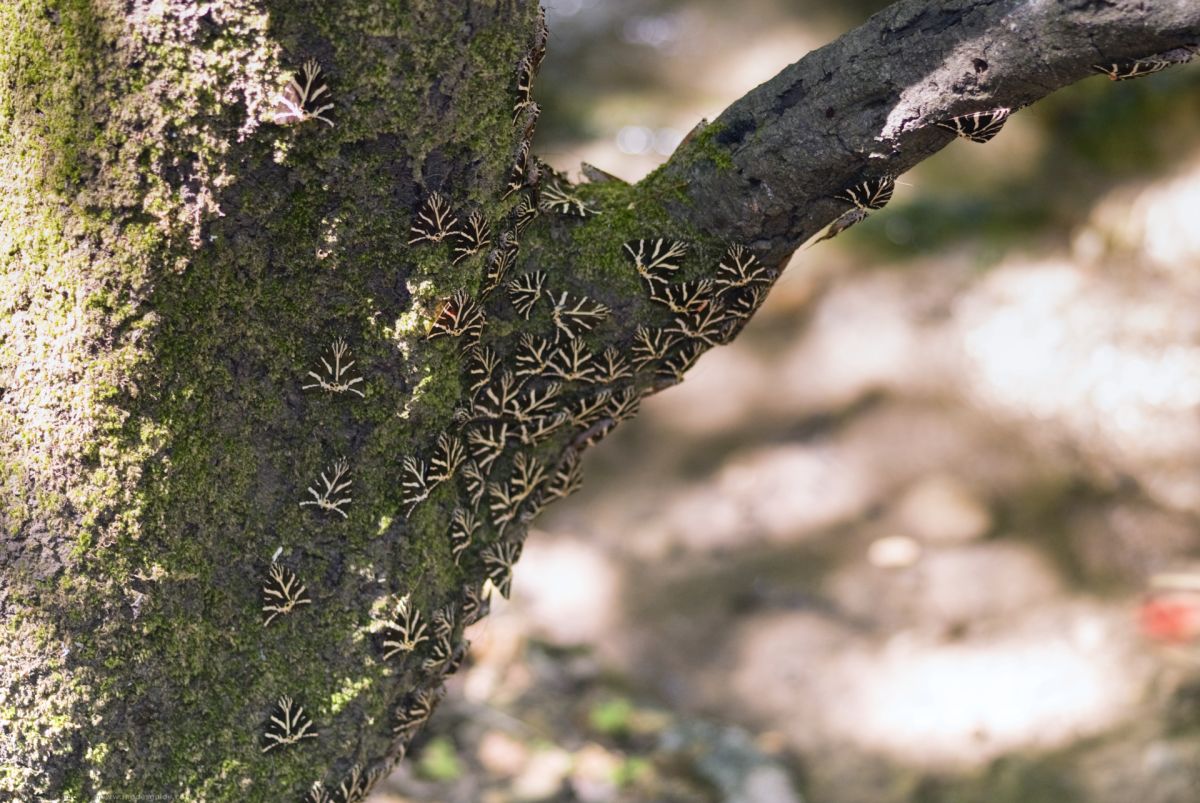
The following general rules apply while exploring the Valley of Butterflies
- It is not allowed to leave the footpaths when exploring, in order to avoid trampling rare plants
- Avoid any kind of noise that could disturb the Butterflies, as well as talking loudly
- Clapping hands is strictly forbidden
- No smoking and polluting the environment with any sort of trash
- It is important to respect the indications of the signs and the guards
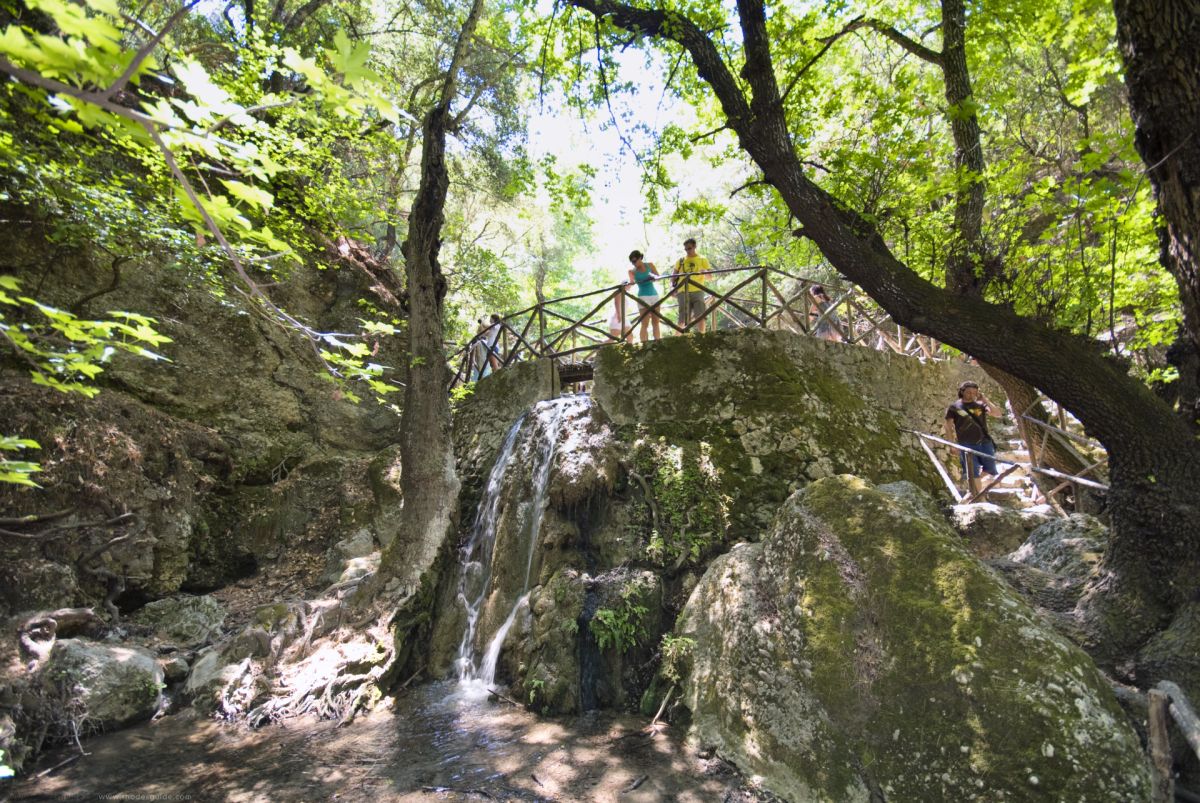
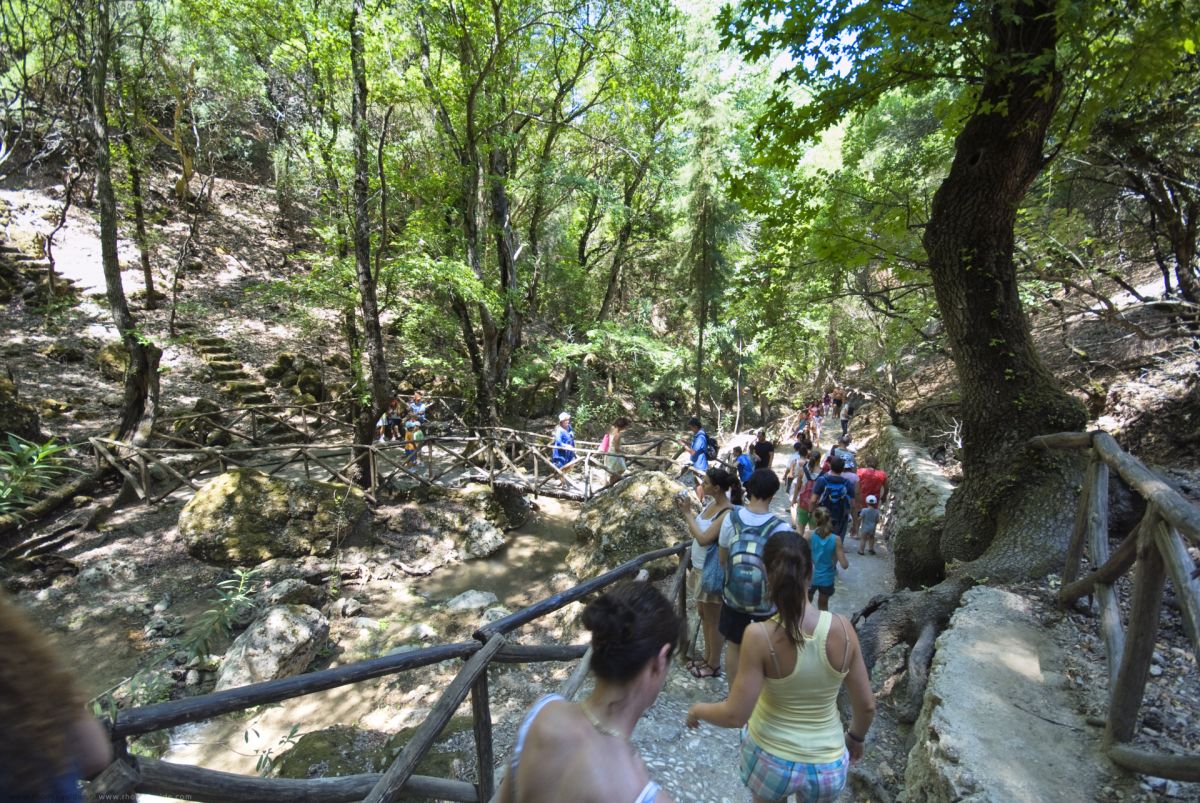
Ticket prices and opening hours
Opening hours:
The opening hours for the valley of butterflies are
From June 6th to September 9th: Monday through Sunday from 08:00 to 18:00
From May 1st to June 9th & September 11 to October 30th: Monday through Sunday from 08:30 - 16:30
Ticket prices:
01/06 - 14/09: Adults 5€
and Free for children under the age of 12
15/09 - 31/05: Adults 3€
and Free for children under the age of 12
Museum of Natural History
The Natural History Museum of Rhodes operates at the entrance of the butterfly valley. Among the exhibits are endemic and rare species of the broader area of the Valley, which are displayed in cases representing the conditions of the natural environment.
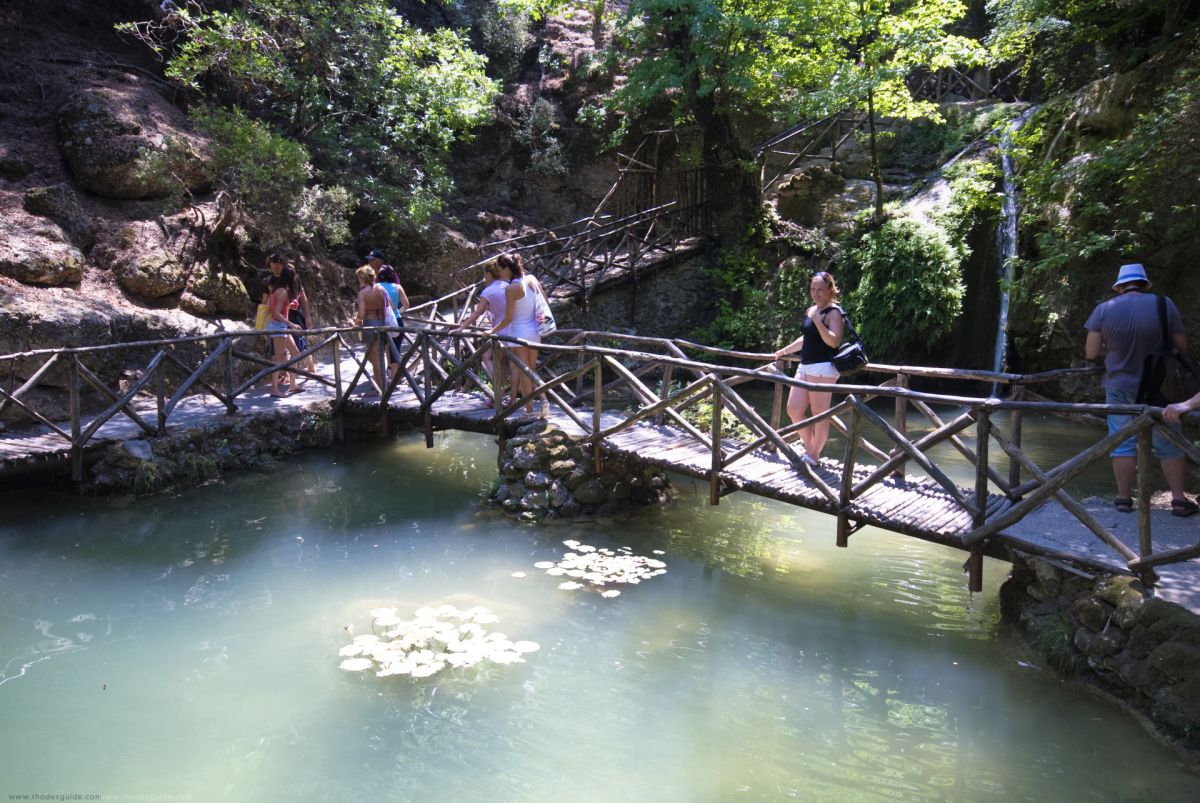
How to reach the Valley of Butterflies
The valley is located about 26 km away from the town of Rhodes, and 6 km from the western coast, in the northern part of the island. Starting from Rhodes city you will find the valley between the villages Paradisi and Theologos along a small road that heads inland. There is also public transportation available by bus.
For more information please visit the official website


 English
English
 Deutsch
Deutsch
 Ελληνικά
Ελληνικά